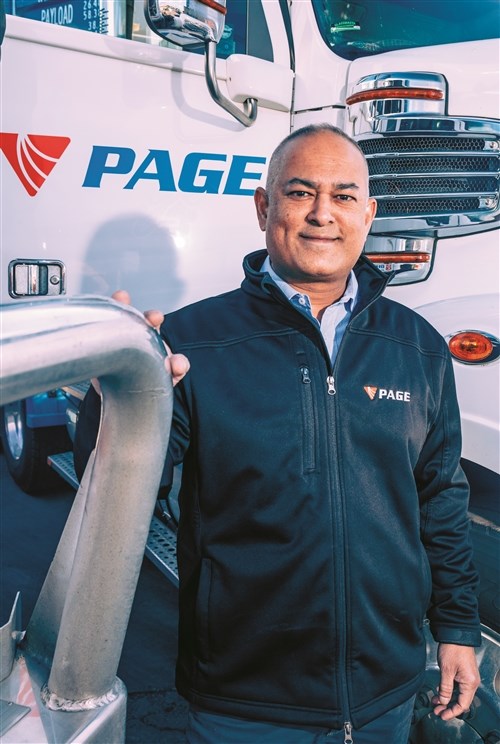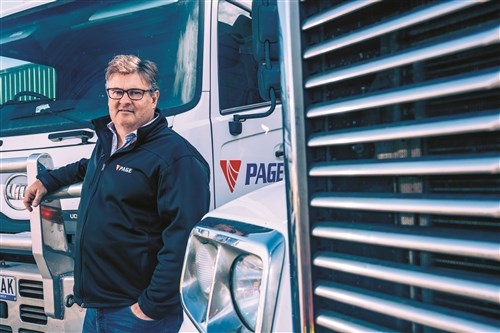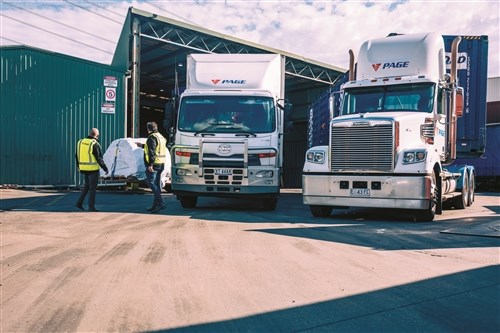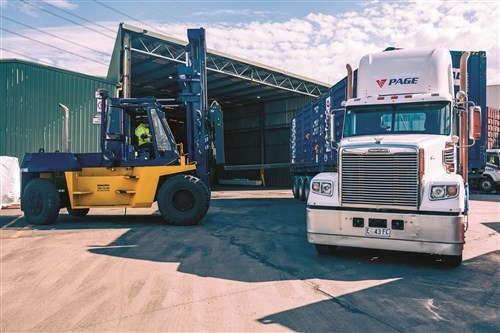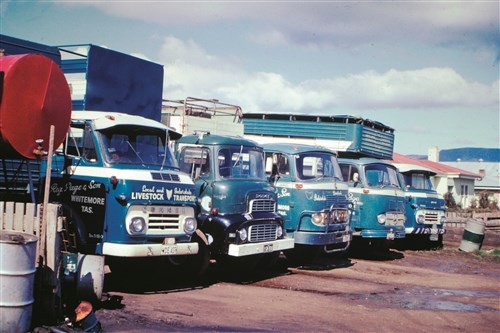As the Tasmanian economy continues to surge, the state’s major shipping carrier Page Transport has diversified into freight services
Eighty-year-old Page Transport has been carrying livestock from Tasmania since the late 1940s.
The family-run business is led by fourth-generation brothers Geoff and Chris Page, who have embarked on a different journey nowadays – acquiring Sydney-based Allalong Tasmanian Searoads and opening up its own freight division, Page Tasmanian Freight.
Freight is not foreign to this family business as 20 per cent of its operations used to be general freight up until 1996.
As any business trying to bullet-proof its future, Page Transport has come to realise that putting all of its eggs in one basket is not viable.
While the brothers are busy transporting livestock – Geoff is based in Launceston and Chris in Melbourne – they knew they needed to bring someone with expertise to develop and manage the freight division.
Page Tasmanian Freight CEO Raj Singh, who’s spent 30 years within the industry but most recently at Booth Transport and SeaRoad as business development and sales manager, has spent the last 18 months setting up the business – a task he has found not too hard as Page Transport already had freight in its DNA.
Anecdotally, according to Geoff, Tasmania’s economy is expanding up to seven per cent each year. Therefore, with capacity to increase, it seemed timely to expand its services to freight and the new business division now has over 100 customers.
The family company prides itself on honesty and willingness to invest in a job.
Page Tasmanian Freight operates in Victoria and New South Wales. It seemed only natural to continue with the family name for the new business division due to its history and respect amongst customers and industry operators, Singh explains.
“When I first started to deal with Geoff and Chris to put together a business with them, I wasn’t told that it has to be named Page Tasmanian Freight,” Singh says.
“I came up with that because I thought there was years of alignment of the Page name in the Tasmanian space.
“It’s a very well respected name, Geoff and Chris are respected people and I didn’t know them when I was in a previous life at SeaRoad.
“But every person I met spoke very highly of them so I thought it’d be crazy to throw away that name and come up with something else logistics when the perfect name in my view was staring at us.”
SLOW TRANSITION
Page Transport acquired Allalong in July, including 35 items of equipment. All 27 Allalong employees have been kept.
Page Transport has been very sensitive about enforcing a name change, as the Cant family was in two minds about selling their business.
Allalong has been a consistent transport operator in the niche state sector and has depots in Sydney, Melbourne, Launceston and Hobart.
The acquisition, of undisclosed value, gives Page full ownership of Allalong business that Ray Cant formed in the early 1980s.
How Page broke cover on its Allalong purchase, here
The decision to acquire Allalong is aligned with the company’s strategic view to provide exceptional customer experience through a blend of professional and family culture, and to establish itself in the Sydney-to-Tasmania market, Geoff says.
“We are pleased to welcome Allalong staff into the Page family and look forward to capitalising on some of the synergies between the businesses, including our heavy fleet business Page Transport,” he adds.
According to the group, acquiring Allalong expedites growth plans of Page Tasmanian Freight and creates new transport options for Tasmanian producers and mainland-based manufacturers, wholesalers and retailers.
“There was a lot of soul-searching from the Cant family,” Geoff says.
“It was a 12-month process with us to get trust from both sides.
“One of the main topics of discussion was staff; where we’d go with their staff and how we would incorporate them.
“We didn’t necessarily know the Cant family personally but we had crossed paths with them within industry and we knew that their business was very sound, and their culture and the way they operate their business is along the same line like us,” he adds.
“The customer base is pretty loyal, so it was not difficult to move into at all. That was an area that we wanted to expand in.”
INCREASED SHIPPING
The replacement of the SeaRoad Mersey vessel with the larger SeaRoad Mersey II has helped Page Transport deliver its livestock quicker to Victoria.
The company had close talks with SeaRoad about the design of the new vessel, saying its 16 livestock trailers sit in a good spot on the ship.
“Ultimately for our livestock, we wanted protection from harsh winds or cold nights on the Bass Strait and ease of loading and unloading,” Geoff says.
“We wanted our stock on late and off early, so they’ve achieved nearly all of that.”
Page Transport carries 80 per cent of the total livestock across the Bass Strait.
The company ships 80 trailers a week – some 1,500 cattle and 16,000 lambs and sheep, for up to seven months, with most going northbound but some also back into Tasmania for fattening and breeding.
It has developed a livestock transit facility on both sides of the Bass Strait in close proximity to the ports, keeping the trip across the water as short as possible.
While many companies take 48 hours to transport cattle, Page Transport never reaches more than 28 hours.
“We’ve put our depot in Melbourne at the end of Melbourne Airport, with up to 15,000 cars a day going past our front gate, and people say, ‘that’s suicide – why would you put your stock out there?’” Geoff says.
“It’s right under the nose of everyone; everyone can see it, so tell me what I’ve done wrong? It’s reversed psychology. If you put it at the back, all those Animals Australia people will jump the fence and run in there with cameras snapping because they think you’ve got something to hide.
“We have an Animals Australia girl who comes and parks outside our place probably once a fortnight. My brother Chris in Melbourne knows her by name. She’s there actively questioning him all the time.
“We don’t necessarily have a problem with animal activists. They don’t annoy us too much but they do annoy our customers; they picket out in front of the abattoirs.”
EQUIPMENT
Over the years, the company has perfected its system of shipping livestock across the Bass Strait in purpose-built shipping equipment.
Its trailers and containers have been continually improved and updated over 50 years of shipping on a roll-on roll-off basis.
The company has constructed some 55 containers at its own workshop and built over 20 40-foot stock crates with appropriate weather protection.
Page Transport has also added rubber flooring, where previously sawdust was used to cushion the animals’ feet, preventing potential soreness on the longer journey.
With a head office based at Carrick, near Launceston, its facilities include stock yards with state-of-the-art loading ramps, sheltered areas, paddocks and hay stores for supplementary feeding, and wash-down facilities. This depot was opened in 2007 by former prime minister John Howard.
The core focus of Page Tasmanian Freight is palletised and full container loads between the mainland and Tasmania, with 30 drivers and 25 prime movers, mainly Freightliners.
Growing a business organically in this market is no easy task, says Geoff, as Tasmanians are loyal.
“We wouldn’t be able to march in with a price offering $100 cheaper than what it is now. I think maybe in Victoria you can get away with that one or two times but in Tassie it’s harder,” he says.
“There’s an economic rise in Tassie, and it’s going. But the big guys have just gotten too complacent, I think.
“A customer shouldn’t ring 20 times to get an answer, so the business we have created has taken advantage of all these gaps we have looked at.
“Our slogan is to make it easier to do business between Tassie and the mainland.”
Page Transport’s original fleet




